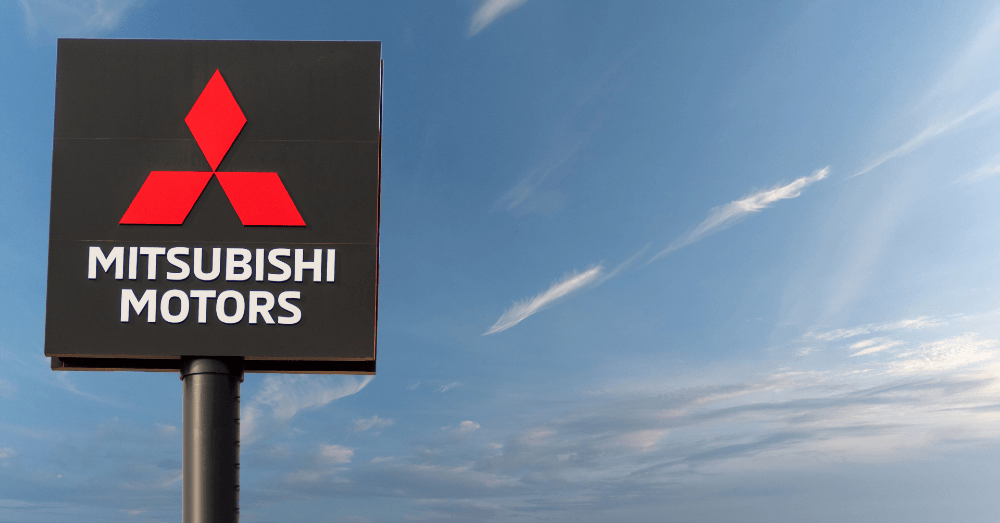The popular Japanese automaker Mitsubishi has roots that go beyond just the auto industry. Like many, you might be surprised to learn that their roots are deep and extend out to a range of industries, influencing some of the biggest sectors throughout Japan and beyond. Let’s look at where Mitsubishi got its start and how it grew to be the global corporation that it is today.
Mitsubishi Group Was Built From an Entrepreneurial Spirit
In 1870, Mitsubishi founder Yataro Iwasaki established a shipping firm. The shipping firm was a product of Yataro’s entrepreneurial spirit. The venture was a family business with Yataro’s brother, nephew, and son branching out the company into various fields over the coming decades. The company took on several names and identities, with the term ‘Mitsubishi’ being the core of the company.
Yataro eventually defined the company with its now iconic logo, a logo that pays homage to the Tosa clan that helped him with its first entrepreneurial endeavor. The clan had three oak leaves as its coat of arms which was intertwined with the family coat of arms of three diamonds to create the now-iconic logo of three diamonds converging at a center point.
Gaining Footing With the Japanese Government
Yataro Iwasaki eventually worked alongside the Japanese government to develop a relationship that allowed him to expand his shipping business. He lent his ships to help the government’s military and, in return, was given more ships to expand his business endeavors. Over the coming years, Mitsubishi would focus much of its efforts on acquiring shipyards, building ships, and continuing its dominance. While the company was primarily established in the shipping industry, over time, the company’s portfolio diversified, especially under the leadership of younger brother Yanosuke Iwasaki.
The company’s diversification later included investments in the mining industry, acquiring expansive territories, including mines for gold, silver, copper, and the country’s first glassware factory. These investments helped to fuel the company’s shipping endeavors further by expanding shipping yards and yielding more ship production. When the company entered the modern era under the leadership of Hisaya Iwasaki, Yator’s older son, the company began to thrive further thanks to Hisaya’s knowledge gained at the University of Pennsylvania. Along with better management of the Mitsubishi company, Hisaya’s progressive ambitions pushed the company into the automotive industry.
Mitsubishi Unveils First Sedan
In 1917, Mitsubishi’s Model A car debuted with a striking resemblance to Henry Ford’s Model A, which had been previously released. Mitsubishi’s Model A was marketed toward the government elite and business officials as opposed to your everyday Joe. Considering this was
the first era of modern transportation, it’s understandable why the company targeted well-off officials.
The Model A touted itself as a sedan with rear-wheel drive and a 35 horsepower 2.8 L engine. The Model A boasted a premium interior and speeds of up to 50 miles an hour, making it an attractive vehicle in the region. However, the expensive manufacturing cost of the Model A as compared to European and American vehicles drove down the demand for Mitsubishi’s first model. In fact, only 22 models were ever created before the production of these vehicles was shut down permanently 4 years later.
In true entrepreneurial fashion, Mitsubishi forged on in the automotive industry by manufacturing trucks known as the Model T 1 for the Japanese government. The Model T 1 offered a dependable and powerful engine that helped it gain traction. The popularity of the trucks soon gave way to demand in bus production. The B 46 became the next automotive model that propelled Mitsubishi forward.
It wasn’t until 1921 that the company made a mark in the automotive industry through its first-ever Japanese diesel engine. During the 1930s, the company continued to innovate, introducing a lineup of SUVs and sedans to the public. Partnerships with globally-recognized actors, including Jackie Chan, helped propel the company further as the actor helped bring greater awareness to newer Mitsubishi models. In doing so, the company grew to become a competitive automaker.
After finding success in the automotive industry, the company’s ambitions did not stop there. They went on to continue dominating the seas through their shipping ventures and eventually take over the skies through their aviation ventures.
Experience Mitsubishi History when You Get Behind the Wheel
All great companies, Mitsubishi has a very dynamic past that is involved, adopted, and grown over the years. To learn more about this innovative company and experience the power of a Mitsubishi for yourself, visit your local Mitsubishi dealer today. Step inside one of the many models available and see for yourself how this innovative company grew to be the powerhouse that it is today.
This post may contain affiliate links. Meaning a commission is given should you decide to make a purchase through these links, at no cost to you. All products shown are researched and tested to give an accurate review for you.
